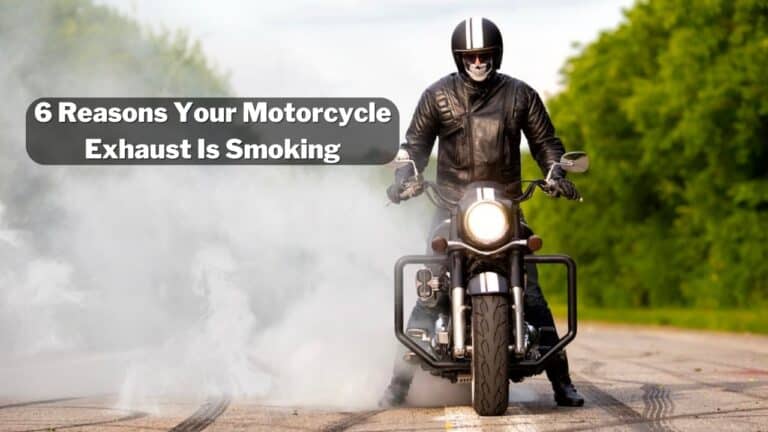Why Is My Motorcycle Overheating? -(6 Reasons + Easy Fixes!)
Being a mechanical engineer, I know the danger of excessive heat near any internal combustion (IC) engine. It not only increases your fuel consumption but seizes the engine.
Excessive heat isn’t good for your motorcycle engine because it will damage the cylinder lining, piston rings, transmission, and piston wear.
You should never ignore it if your motorcycle is overheating; otherwise, it can frustrate you with a hefty bill at the mechanic’s garage.
In this guide, we’ll explore the various reasons why your motorcycle is overheating and what you can do to fix it cost-effectively.
Table of Contents
What Causes Your Motorcycle Engine To Overheat?
As I told you earlier, you should never ignore if your motorcycle is overheating. But you must know the exact reason why your motorcycle engine is overheating.
An overheating motorcycle indicates the failure of the cooling system. If it’s liquid-cooled, it is most probable that the radiator fan or pump is not working or the radiator fins are clogged with dust.
Also, low-quality and insufficient engine oil, incorrect air-fuel ratio, and coolant leaks reduce the heat dissipation rate, and your motorcycle overheats.
In air-cooled engines, overheating occurs mainly due to improper maintenance and irregular oil changes. Sometimes, high-speed rides and too rich or lean air-fuel mixture supply also increase the temperature.
How To Tell Your Motorcycle Is Overheating?
The more significant issue is that most riders think overheating is expected on motorcycles, and they ignore it. But that’s not good for your engine in the long run.
Overheating will seize your motorcycle engine one day, and a mechanic will demand huge amounts of money for repair.
So, what temperature is too hot for a motorcycle engine? An air-cooled motorcycle should normally operate between 68°C and 141°C (depending on whether it’s idling in heavy traffic or running in open air).
However, the operational temperature range may vary from manufacturer and model of the bike. (I advise you to refer to the owner’s manual for an accurate temperature range.)
Apart from this, notice the below-mentioned symptoms of an overheating motorcycle engine:
- Excessive Exhaust Smoke
- Increased Unusual Engine Noise
- Reduced Fuel Economy
- Bad Throttle Response
- Drastic Engine Performance Drop
- Rising Temperature Guage Reading
- Unusual Engine Smell
- Faster Engine Oil Burning
How To Prevent Your Motorcycle From Overheating
Until now, I have explained the symptoms and causes of an overheating motorcycle engine. Now, we’ll explore some easy ways to prevent the overheating problem on your motorcycle.
Here are six methods to make your liquid-cooled and air-cooled motorcycles run cooler:
1. Change Engine Oil
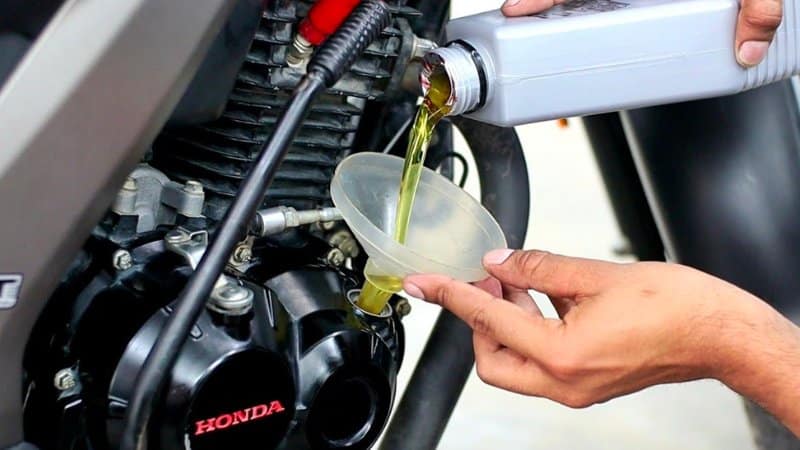
You’re mistaken if you think engine oil is only used for parts lubrication. It also keeps your motorcycle engine cool.
Whether your motorcycle is air-cooled or liquid-cooled, the engine oil dissipates a large quantity of heat into the environment.
Over time, the engine oil level decreases, and it fails to dissipate heat, which results in an overheating problem.
That’s why regular oil change and maintenance is necessary to keep your running for years and years.
You should change your motorcycle engine oil every 5,000 to 8,000 miles or every 12 months. Again, it depends on engine size, oil viscosity, and riding conditions.
Click here for my detailed guide on oil change frequency for various motorcycle manufacturers.
2. Clean Radiator Grill
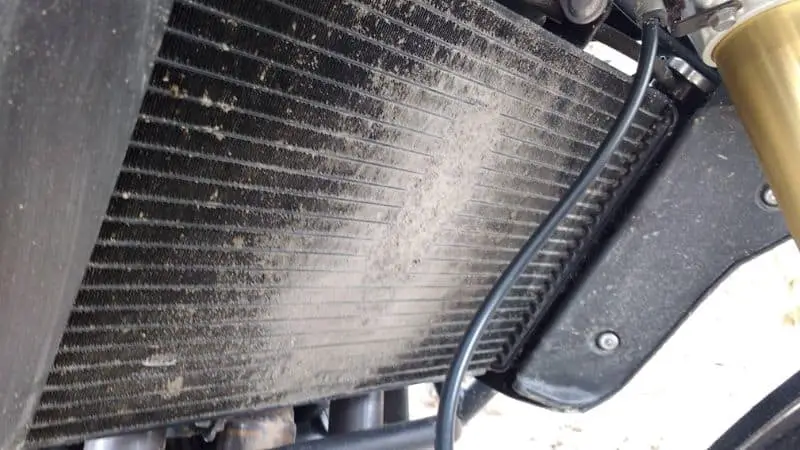
A radiator must be installed before the engine if your motorcycle has a liquid cooling system. The coolant (oil or water) is passed through the pockets of the combustion chamber, which carry the heat.
This hot coolant is passed through the radiator pipes, and a fan throws air to dissipate the carried heat.
Again, the coolant circulates between the combustion chamber pocket, and the cycle repeats.
Over time, dust and debris stick around the radiator grill, reducing heat dissipation efficiency.
As a result, the hot coolant is circulated to the engine without dropping the carried heat, and your motorcycle engine overheats.
The easiest solution is to blow some pressurized air into the radiator grill and clean it thoroughly with water.
Cleaning the radiator grill increases the heat dissipation rate of coolant, and your motorcycle engine will not overheat.
3. Check Coolant Level
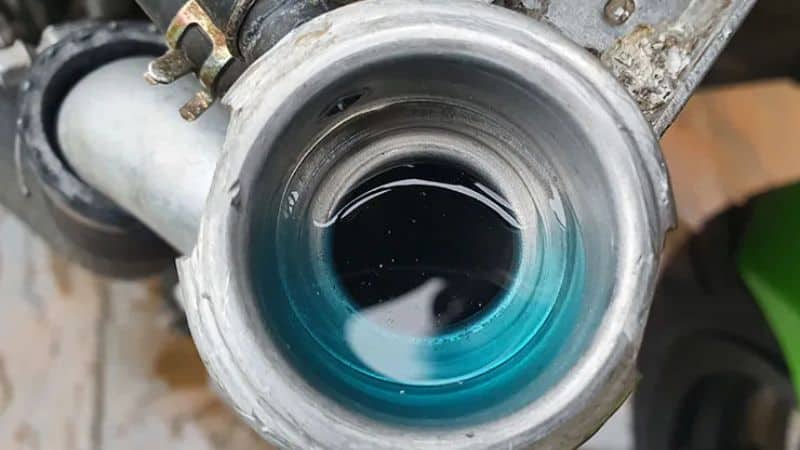
Your radiator should have an optimum coolant level that carries heat from the engine. If your radiator has some leakage, the coolant will leak and evaporate, which results in engine overheating.
You should inspect and fix any loose connection or leakage in the radiator pipes. After fixing the leakage, fill the specified coolant to the recommended quantity.
If your coolant is too old, it may also cause overheating problems. So, you should regularly change the coolant to prevent your motorcycle from overheating.
I advise you to read your owner’s manual for the correct quantity of radiator coolant. Changing the coolant will fix the overheating problem.
4. Replace Thermostat
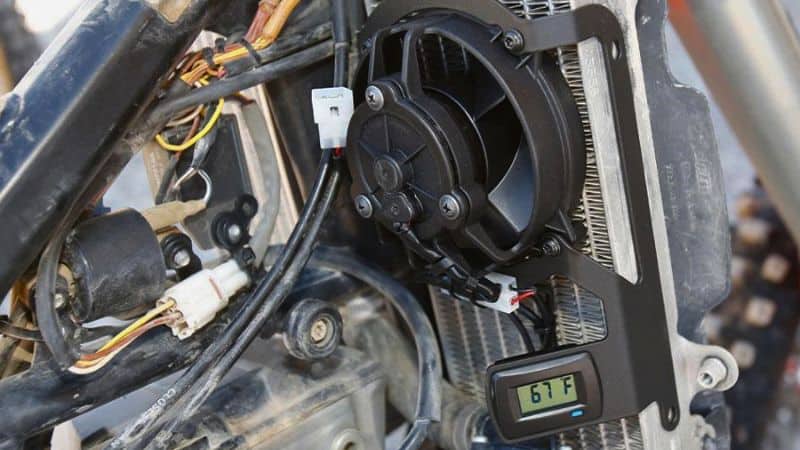
A fan is installed beside the radiator grill, which forces the airflow to keep the coolant cool. The thermostat senses the radiator’s temperature and sends a signal to control the fan speed.
Whenever the engine temperature rises above the acceptable limit, the sensor sends signals to the thermostat to switch on the radiator fan.
If the thermostat is faulty, it won’t control the radiator fan speed, which results in the engine overheating.
If your thermostat is damaged, there is no option other than to replace it. Remember that replacing a thermostat is much cheaper than replacing the piston and cylinder lining. So, don’t ignore it.
5. Tune Your Carburetor
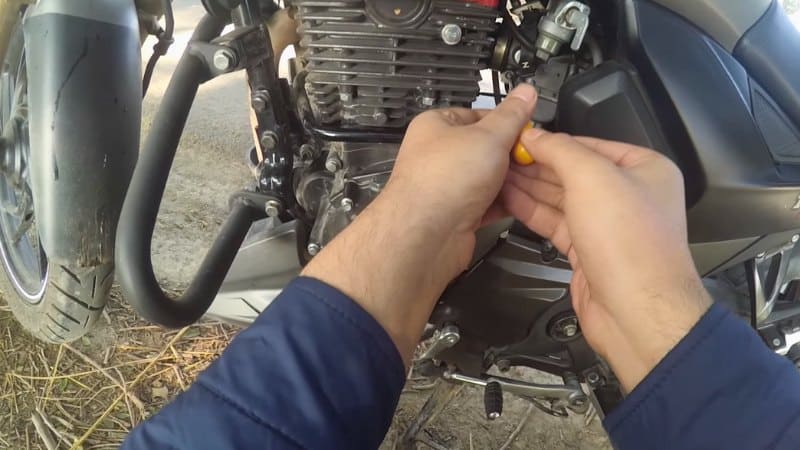
This applies to the carburetted motorcycles. The function of a carburetor is to mix the fuel with air in an accurate ratio.
Over time, the carburetor nozzles are clogged with dirt, which disturbs the stochiometric ratio (ideal air-fuel ratio for complete combustion).
This results in too lean or rich air-fuel mixture supply to the combustion chamber. An inaccurate ratio will disturb the combustion process and lead to overheating.
Carburetor tuning is the game of experience. So, I advise you to get it tuned by a mechanic for higher performance and fuel economy.
6. Do Not Ride Continuously
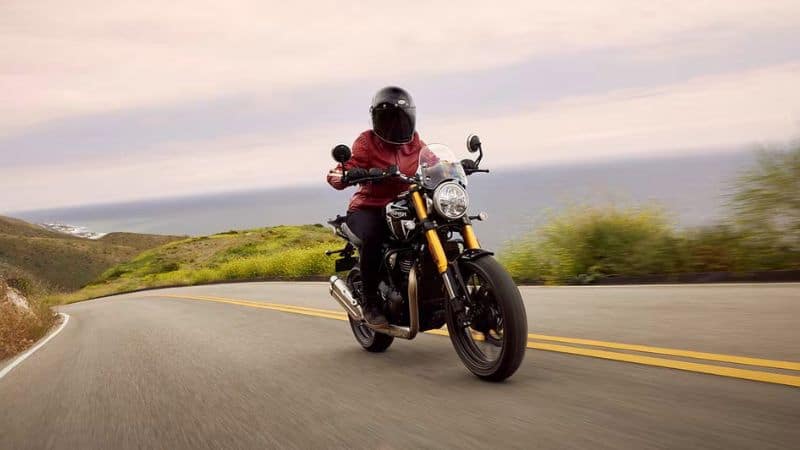
If you’re riding your motorcycle on full-throttle open for an extended period, it will overheat the engine.
The temperature will further rise if the weather is too hot outside. You should not always rev your motorcycle at top speed in this situation.
Give it some rest, men! It’s already been working hard to give extra power for your ride. Let it cool down for a few minutes.
What Should You Do If Your Motorcycle Overheats in Traffic?
If you’re in traffic and your motorcycle is overheating, turn off the engine during stops to let it cool.
Generally, this problem occurs on air-cooled bikes because no air passes through the fins to dissipate engine heat. Airflow increases once it reaches open roads, which cools down the engine.
The best way to deal with this situation is to pull over, turn off the engine, and let it cool for a few minutes before riding ahead.
Which Is Better Between Air-Cooled And Liquid-Cooled Motorcycle?
The answer to this question isn’t straightforward. Generally, smaller engine-size bikes are air-cooled, and bigger cc bikes are liquid-cooled. Both have their advantages and disadvantages.
Air-cooled bikes are cheaper and require less maintenance, while the peak horsepower of liquid-cooled motorcycles is higher because the engine is running cooler.
If you’re buying a bigger CC superbike for racing, select a liquid-cooled system because it keeps your engine components cool and prevents them from expanding.
Conclusion
I have answered all your queries related to motorcycle overheating problems. However, you can still ask your questions in the comment box, and I’ll try my best to make your ride smoother.
Once again- don’t ignore if your motorcycle engine is overheating because heat expands the metal, which results in the engine seizing.


